Today’s post on How to Cook Pork Shoulder is sponsored by my good friends at the National Pork Board. All photos, opinions, and recipes remain -as always-my own.
Have you just rifled through your freezer to find a giant, frozen pork shoulder that you bought because you were impressed by the low cost per pound of that giant cut of pork and have no idea what to do with it? You’re not alone.
First, thaw that big pork shoulder for a couple of days in the refrigerator, then let’s talk about why you’re about to be as happy as a clam that you had the foresight to stash one of my favourite cuts from any protein source ever.
Stay tuned for recipes from both me and my friends at the Pork Board to help you figure out what to do with your freezer full of meat!
Why Use Pork Shoulder
I’m so excited to teach you both how to cook pork shoulder and why/how you can get more meals out of cooking one (not-so) little pork shoulder than just about any other cut of anything. I mean that sincerely.
Pork shoulder is an incredibly economical cut. Where I purchase pork shoulder, it is generally $1.69/pound.
Even if you count on losing 40% of the starting weight to cooking (see the section below on how much to use), you’re still ending up with a big bang for your purchasing dollar because pork shoulders are generally quite large.
All that wouldn’t matter much if it was a fussy cut to cook. Thankfully, when you consider how to cook pork shoulder and just how simple and versatile it is, you’ll be awfully glad you have that pork shoulder on hand.
How to Cook Pork Shoulder
You have so many options here, it’s almost an embarrassment of riches. From the slow cooker to the smoker to the grill to the Dutch oven, it’s virtually assured that your kitchen is equipped to make one today.
How to Cook Pork Shoulder in a Slow-Cooker
Your slow-cooker or crockpot will need to be at least 5 quarts to manage a pork shoulder, but honest-to-pete, you are only limited by the size of your slow cooker vs. the size of your pork shoulder. This is the easiest method BY FAR.
It is as easy as unwrapping your pork shoulder, plopping it into the slow-cooker, adding your desired seasonings, covering it, and letting it go on HIGH for one hour then LOW for another 7 hours or overnight. It becomes so tender it falls right off of the bone.
One of my first popular recipes on the blog here was our slow-cooker Cuban Pork, which we still make and devour on a regular basis.
Instant Pot Pulled Pork
Bless those Instant Pots and other counter top pressure cookers. They sure make life easy!
This fantastic instant pot pulled pork recipe from the National Pork Board shows you how simple it is to prepare pulled pork in an instant pot using a boneless pork shoulder. In just a little over an hour, you’ll have succulent pulled pork and be ever so pleased with yourself.
How to Cook a Pork Shoulder in a Dutch Oven
If you aren’t much for slow-cookers or instant pots, I’m betting you have a Dutch oven on hand. I think this method is almost as easy as the slow-cooker method, but just requires a little more attention since you start it on the stove top and then finish it in the oven.
Searing it first is optional, but is always tasty. You add it into the Dutch oven with either water, broth, hard cider, or a lager style beer and bring to a simmer before covering and transferring it to the oven to braise slowly for a couple of hours.
How long the process takes depends on a few things including the size of your pork shoulder and whether it has a bone or is boneless. It’s ridiculously hard to over-cook pork shoulder, though, so don’t worry about that so much as whether you’ve achieved that fall-apart tender state that characterizes amazing pulled pork.
How Much Pork Shoulder To Use for Pulled Pork
When you cook a bone-in pork shoulder, you should count on losing about 40% of the starting weight regardless of cooking style. To determine how many meals you’ll get out of a pork shoulder, multiply the starting weight by 40% then subtract that from the overall weight.
That will give you a general idea of how much pulled pork you’ll end up with after cooking the shoulder. Then assume you’ll want ⅓ to ½ a pound per person, per meal.
For instance, if you start with an 10 pound bone-in pork shoulder, you can generally figure you’ll end up with 6 pounds of cooked meat which will yield between 12 and 18 servings. If you start with a boneless cut, you’ll have less loss of weight in cooking, but it will almost invariably be more expensive to purchase per pound.
And friends, if you really want pulled pork but don’t have a shoulder, you can substitute the following cuts and prepare the same way; pork butt, pork sirloin roast, boneless spare ribs or country style ribs, or boneless pork loin in equal weights. Just keep in mind that the smaller cuts will cook much faster than the larger cuts and pay attention to cooking times.
Pulled Pork Recipes
If you’re looking for more pantry-friendly ingredient combos for pulled pork recipes, I have more choices for you. You can make Slow Cooker Honey Mustard Pulled Pork, and Apple Cider Pulled Pork, in addition to the aforementioned Classic Slow-Cooker Cuban Pork.
Let’s say you’ve already cooked your pork shoulder and are looking for ways to use it up in pulled pork recipes, you lucky dog. Right here on Foodie with Family, I have Pulled Pork Huevos Rancheros, Filthy Burgers (beef, barbecue, pulled pork, and bacon burgers), Barbecue Pulled Pork and Toasted Cheese Sandwiches, Barbecue Pulled Pork Pizza, BBQ Pulled Pork Overstuffed Shells, and Pulled Pork Walking Tacos, to name a few.
The National Pork Board is a fantastic source for recipes using pulled pork in delicious ways.
They have pulled pork mac and cheese, pulled pork nachos, and pulled pork soft tacos. But they also have tons of recipes where you can sub in pulled pork.
These Tex-Mex Stuffed Peppers from the Pork Board call for ground pork (also delicious!) but if you have pulled pork on hand and no ground pork, just sub in 3 cups of pulled pork for the ground and skip the browning of the pork since it’s already fully cooked.
Likewise, if you find yourself craving this black bean pork chili but have no raw boneless pork sirloin roast, don’t despair! You can easily substitute 3 cups of pulled pork for the cut up roast and proceed as directed with the bonus of it being done sooner since you’re starting with already cooked pulled pork!
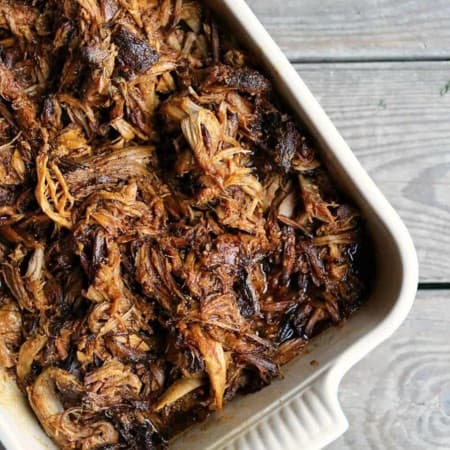
How to Cook Pork Shoulder
Rate RecipeIngredients
- 1 tablespoon olive oil or vegetable, canola, sunflower, or peanut oil
- 10 pounds pork shoulder bone-in or boneless
- 2 onions peeled and sliced into thick slabs
- 12 cloves garlic peeled and left whole
- 1 tablespoon kosher salt
- 1 teaspoon freshly ground black pepper
- 2 cups water, broth, orange juice, hard cider, or lager beer
Optional
- stems of fresh cilantro or parsley for flavour and taste
- other aromatics like toasted dried chile peppers, fresh hot peppers, or spice blends
Instructions
How to Prepare a Pork Shoulder for Cooking
- Trim any large sections of fat away from the outside of the shoulder, leaving small amounts and interior fat. Sprinkle the surface with salt and pepper.
How to Cook Pork Shoulder in a Dutch Oven
- Preheat the oven to 325°F.
- Place your 5 quart or larger dutch oven over medium high heat. If you’d like to sear the pork shoulder first, you can, but it’s not strictly necessary.
- To sear the pork, drizzle a tablespoon of oil into the Dutch oven and place it over medium high heat. Add the pork shoulder and brown on all sides.
- Nestle the sliced onions and garlic around the sides of the pork shoulder, add the liquid, then bring to a simmer. Cover with the lid and carefully transfer the whole thing to the oven.
- Set the timer for 2 hours when you’ll begin checking it for doneness. The time it takes your pork shoulder to be done cooking will vary wildly based on a variety of factors including the starting weight and whether it is bone-in or boneless.
- Check the pork shoulder every 30 minutes after the 2 hour timer for doneness. A finished pork shoulder will fall away from the bone or shred easily when prodded with forks.
- When in doubt, cook for another half an hour. It’s nearly impossible for you to over-cook pork shoulder, particularly when you're checking it every half hour.
How to Cook Pork Shoulder in a Slow Cooker
- Place the prepared shoulder into a large slow-cooker. A 10 pound shoulder will likely require an 8 quart or larger slow cooker. Smaller pork shoulders can go into smaller slow cookers.
- Add all remaining ingredients, put the lid in place, and cook on HIGH for 1 hour.
- Turn the slow-cooker to low, and cook for 7 to 12 hours, or until the meat is fall-apart tender.
How to Cook Pork Shoulder in a Smoker
- If you like, you can use a barbecue spice rub on the trimmed pork shoulder in place of salt and pepper. Just rub it generously.
- Preheat a smoker to 250°F with the wood of your choice for at least 10 minutes.
- Place the pork shoulder directly on the grate with a drip pan underneath it to catch fat. Smoke for 3 to 5 hours hours, or until the internal temperature reaches 160°F.
- Transfer the pork shoulder to a disposable aluminum pan and add in the onions, garlic, and pour in apple cider, hard cider, or lager beer with the pork shoulder. Do not use herbs or other aromatics with smoked pork. Tightly cover with foil and continue cooking for an additional 3 to 4 hours or until the internal temperature of the pork at its thickest part reaches 204°F.
How to Pull Pork
- When it's so tender it falls apart, carefully move the pork shoulder to a large, heat-roof mixing bowl. Strain the cooking liquid and any aromatics through a fine mesh sieve or colander set over a saucepan on medium high heat.
- While the pan juices reduce to 1/3 of their original volume, use two forks or my favourite heat-proof barbecue gloves to shred or pull the pork into bite sized pieces.
- Add the reduced pan juices a couple of tablespoons at a time, tossing to coat until the pulled pork is as dressed as you'd like it.
Nutrition
Nutritional information is an estimate and provided to you as a courtesy. You should calculate the nutritional information with the actual ingredients used in your recipe using your preferred nutrition calculator.
did you make this recipe?
Make sure to tag @foodiewithfam on Instagram and #hashtag it #foodiewithfamily so I can check it out!
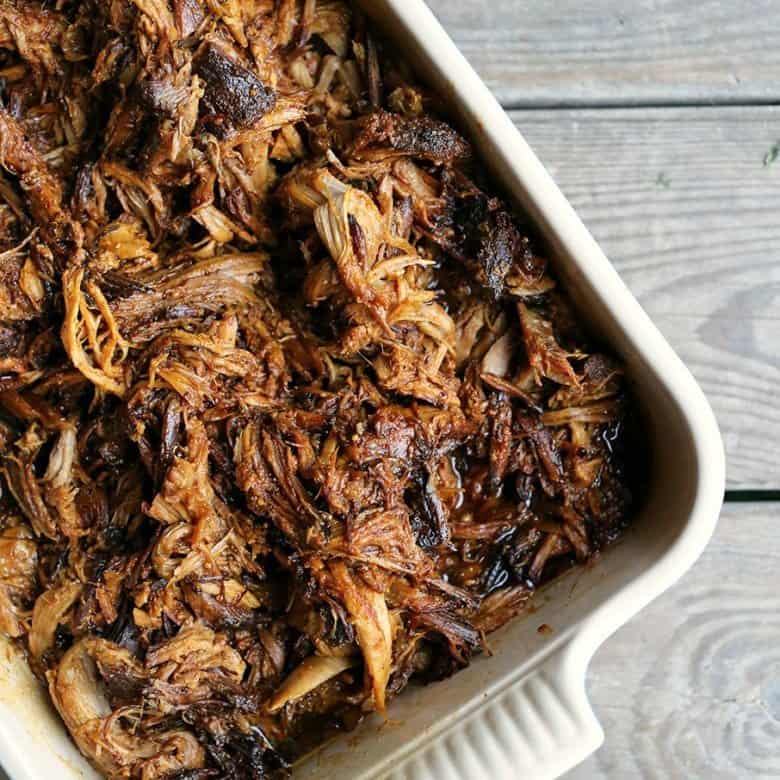
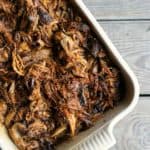
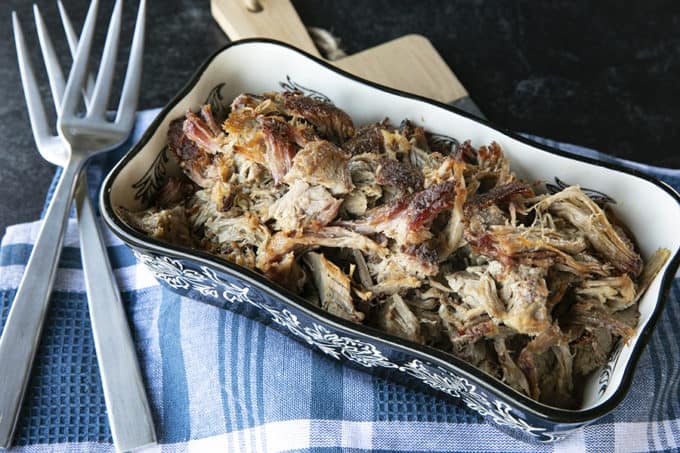
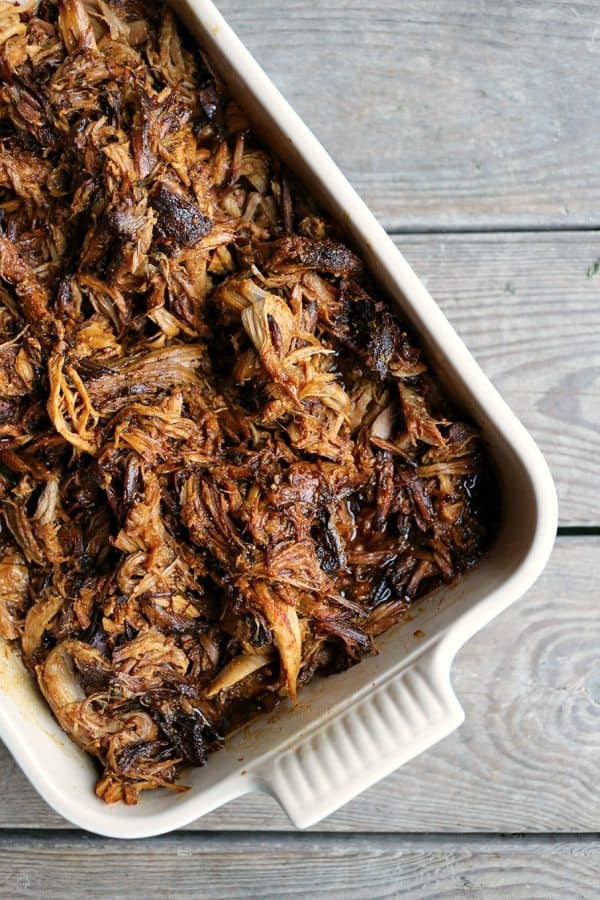
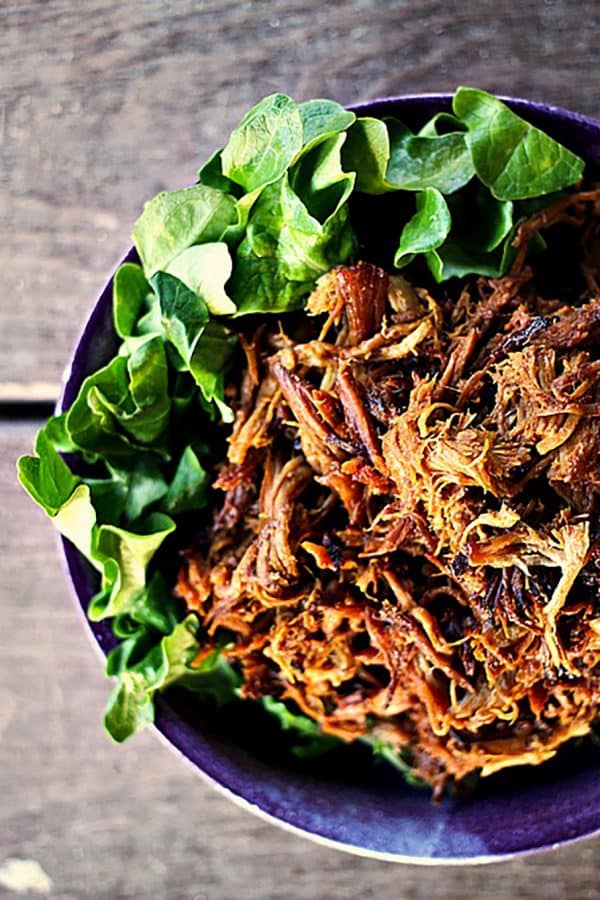
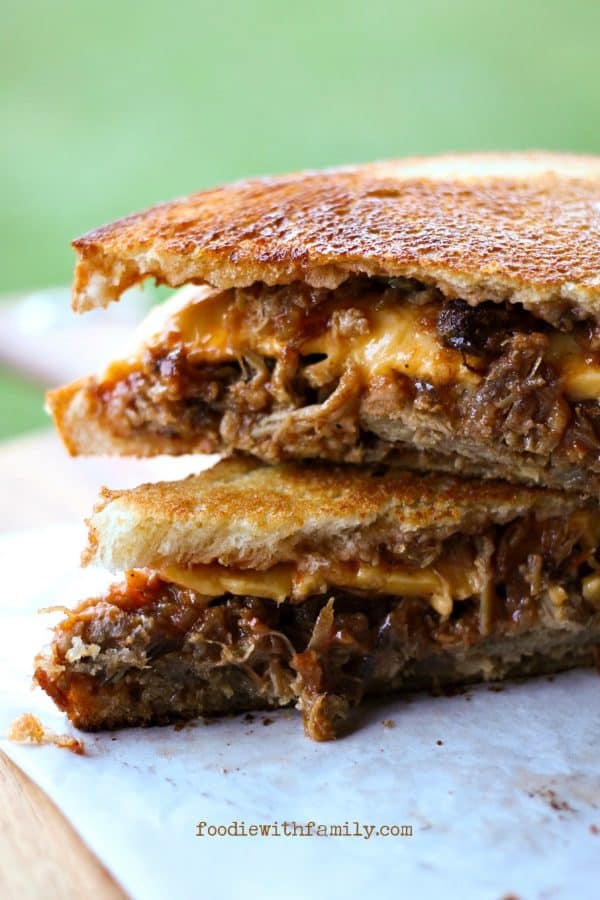
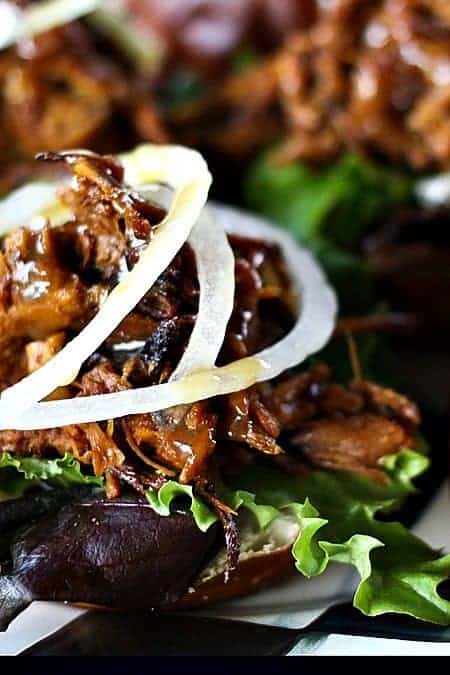
![Skip to main content Skip to toolbar About WordPress Foodie With Family 21 Plugin Update, 1 Theme Update 77 comments awaiting moderation New View Post SEO Good SEO score Shareaholic Delete Cache Howdy, Rebecca Log Out Genesis 2.5.0 is available. Check out what's new or update now. Edit Post Add New Post updated. View post Enter title here Permalink: https://www.foodiewithfamily.com/filthy-burgers-b…rk-bacon-burgers/ Add Slider p Word count: 1826 Last edited by Rebecca on May 22, 2017 at 11:35 pm Preview Changes Status: Published Edit Edit status Visibility: Public Edit Edit visibility Revisions: 9 Browse Browse revisions Published on: May 22, 2017 @ 20:00 Edit Edit date and time Readability: Not available SEO: Good Move to Trash Add New Tag Separate tags with commas 4th of July barbecue recipes budget friendly family-friendly Independence Day kid friendly party food seasonal Super Bowl All Categories Most Used Select / Deselect All Rebecca Recipes Make Ahead & Freezer Pleaser Sandwiches & Burgers Beef, Venison, & other red meat Pork & Piggy Goodies Crunchy Beauty Tips Friday Fifteen: Link Love Giveaways! Household Hints Housekeeping Project Food Blog 2010 Record-Eagle Columns Round Ups Sponsored Posts Stretching your dollars That's Life! Travel Uncategorized Valerie Appetizers & Snacks Beverages & Sippy Things Blender Recipes Bread & Quick Breads Canning & Food Preservation Condiments & Spice Blends Desserts & Sweets Easy Meal Plan Eggs, Cheese, & Dairy {Includes Cheesemaking} Gifts Gluten Free Household & Crunchy Beauty Main Dishes Not Your Mama's Canning Book One Pot & Sheet Pan Dinners Pizza & Pasta Product & Cookbook Reviews Salad & Side Dishes slow-cooker Soups & Stews Tutorials & Kitchen Tips Breakfast Meats Seafood Vegetarian & Vegan Chicken, Turkey, & other birds Lamb Sausage & Hot Dogs Getting Creative With Leftovers Instructional Kitchen Techniques and Hints Gross out foods Humour Travel + Add New Category Disable Pinterest Pin It button on all images in this page Set featured image Hide Share Buttons Hide Related Content Exclude from Related Content Do not include Open Graph tags Custom Link Override the default link for this post. Custom Link Behaviour Override the link behaviour for this item. Custom Image URL Content optimization Good SEO scoreSocialAdvanced Readability Filthy Burgers Good SEO score Filthy Burgers Good SEO score Snippet preview You can click on each element in the preview to jump to the Snippet Editor. SEO title preview: Filthy Burgers (Beef, Barbecue Pulled Pork, & Bacon Burgers) Slug preview: www.foodiewithfamily.com/filthy-burgers-beef-barbecue-pulled-pork-bacon-burgers/ Meta description preview: Filthy Burgers: Beef burgers filthied up with loads of pulled pork and crispy bacon in them! Blissfully meaty, & sure to make you a grilling superstar! Focus keyword Enter a focus keyword This article is cornerstone content Analysis Bad SEO score The keyword density is 0.3%, which is too low; the focus keyword was found 5 times. OK SEO score The slug for this page is a bit long, consider shortening it. Good SEO score This page has 0 nofollowed outbound link(s) and 19 normal outbound link(s). Good SEO score This page has 0 nofollowed internal link(s) and 4 normal internal link(s). Good SEO score The focus keyword appears in the first paragraph of the copy. Good SEO score The meta description contains the focus keyword. Good SEO score The length of the meta description is sufficient. Good SEO score The focus keyword appears in 2 (out of 12) subheadings in the copy. While not a major ranking factor, this is beneficial. Good SEO score The images on this page contain alt attributes with the focus keyword. Good SEO score The text contains 1840 words. This is more than or equal to the recommended minimum of 300 words. Good SEO score The page title has a nice length. Good SEO score The focus keyword appears in the URL for this page. Good SEO score You've never used this focus keyword before, very good. Insights Prominent words Once you add a bit more copy, we'll give you a list of words and word combination that occur the most in the content. These give an indication of what your content focuses on. Read our ultimate guide to keyword research to learn more about keyword research and keyword strategy. Select Layout Layout Settings Default Layout set in Theme Settings Content, Primary Sidebar Content, Primary Sidebar Primary Sidebar, Content Primary Sidebar, Content Content, Primary Sidebar, Secondary Sidebar Content, Primary Sidebar, Secondary Sidebar Secondary Sidebar, Primary Sidebar, Content Secondary Sidebar, Primary Sidebar, Content Secondary Sidebar, Content, Primary Sidebar Secondary Sidebar, Content, Primary Sidebar Full Width Content Full Width Content Custom Body Class Custom Post Class Allow comments. Allow trackbacks and pingbacks on this page. Page-specific Scripts Suitable for custom tracking, conversion or other page-specific script. Must include script tags. Rebecca, 1 min ago (May 22, 2017 @ 23:35:06) Rebecca, 5 hours ago (May 22, 2017 @ 18:15:19) Rebecca, 5 hours ago (May 22, 2017 @ 18:14:50) [Autosave] Rebecca, 5 hours ago (May 22, 2017 @ 18:09:05) Rebecca, 6 hours ago (May 22, 2017 @ 17:39:58) Rebecca, 6 hours ago (May 22, 2017 @ 17:21:35) Rebecca, 6 hours ago (May 22, 2017 @ 17:20:45) Rebecca, 2 months ago (March 23, 2017 @ 10:43:34) Rebecca, 2 years ago (October 16, 2015 @ 09:52:18) Add comment Rebecca foodiewithfamily.com rebecca@foodiewithfamily.com 74.69.176.198 In reply to Joshlynn millsap.That's really flattering, Joshlynn. I'd love it if you threw a mention of me in there :D Unapprove | Reply | Quick Edit | Edit | Spam | Trash Joshlynn millsap Joshlynnmillsap@gmail.com 207.68.219.166 This looks so darn tasty! Would you mind if I add this burger to my menu at my steakhouse??? I hope I can cause I'm really looking forward to making these! Unapprove | Reply | Quick Edit | Edit | Spam | Trash amanda iambaker.net manda2177@gmail.com 69.144.143.151 Delicious!!! Unapprove | Reply | Quick Edit | Edit | Spam | Trash Alicia J. icyeyes1971@gmail.com 192.152.200.150 I love trying new burgers, and these sound fantastic. Adding to my menu for the next week. Unapprove | Reply | Quick Edit | Edit | Spam | Trash Erin chorea@gmail.com 67.165.91.49 My husband and I have been on a diet for the past three weeks and have three more to go. I spend each night on Pintrest looking at all the things I can't have for another three weeks. Then I see this!!!!!!!!!!!!!!!! oh amazing. You are the foodie of my heart. (helps I have been starving for the past three weeks) but wow! I think I have pinned half your post. Being on this diet has done me several favors. First... getting back to a healthy weight. Second... I will never eat fast food again. Life is too short and there is some seriously amazing things out there I have never even tasted. Thank you! Unapprove | Reply | Quick Edit | Edit | Spam | Trash 65 Savory Summer Recipes for Picnics & Barbecues – Cupcakes & Kale Chips cupcakesandkalechips.com/2014/06/20/picnic-barbec… 184.168.200.233 […] FILTHY BURGERS | Foodie with Family […] Unapprove | Reply | Quick Edit | Edit | Spam | Trash Carolyn alldayidreamaboutfood.com carketch29@yahoo.com 173.76.56.236 Girlfriend, THAT is a burger. I have died and gone to hog heaven! Unapprove | Reply | Quick Edit | Edit | Spam | Trash Tristan tristansaunders@hotmail.com 46.208.84.219 Just made these - best burger I've ever had. Made the focaccia buns especially for them - can't have poor buns for a burger of such excellence! https://www.facebook.com/photo.php?fbid=10152137907831270&set=a.69287101269.79507.665786269&type=1&theater Unapprove | Reply | Quick Edit | Edit | Spam | Trash Fire Up the Grill: 5 Tasty Hamburger Recipes for Summer – mommyoftwolittlemonkeys.com/fire-up-the-grill-5-t… 67.222.134.166 […] Filthy Burgers (Beef, Barbecue Pulled Pork, & Bacon Burgers) – from Foodie with Family […] Unapprove | Reply | Quick Edit | Edit | Spam | Trash Angel Shadoff shadoffmom@gmail.com 96.254.193.36 These look good - going to have to try these! I was so excited when I read your "about me" page! I grew up in Karlin, lived in Buckley until 2011 - when we moved to Tampa Fl. Miss northern Michigan so much! Unapprove | Reply | Quick Edit | Edit | Spam | Trash Show more comments Thank you for creating with WordPress. Version 4.7.5 Featured Image Filter by type Filter by date Search Media Attachment Details filthy-burgers-collage.jpg May 22, 2017 469 KB 700 × 2500 Edit Image URL Title Caption Alt Text Description Filthy Burgers: Beef burgers filthied up with loads of pulled pork and crispy bacon in them!](https://www.foodiewithfamily.com/wp-content/uploads/2017/05/filthy-burgers-pulled-pork-beef-bacon-square-680x680.jpg)
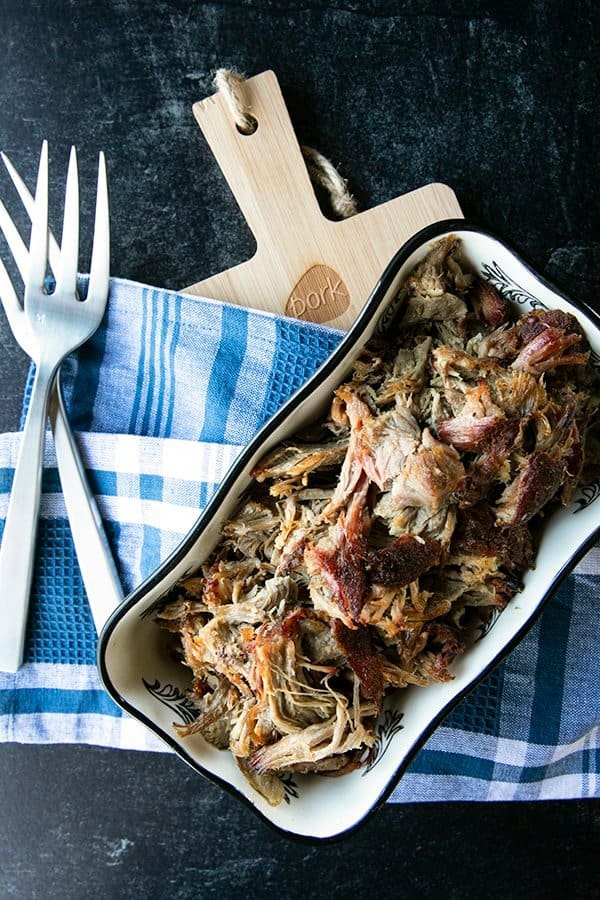
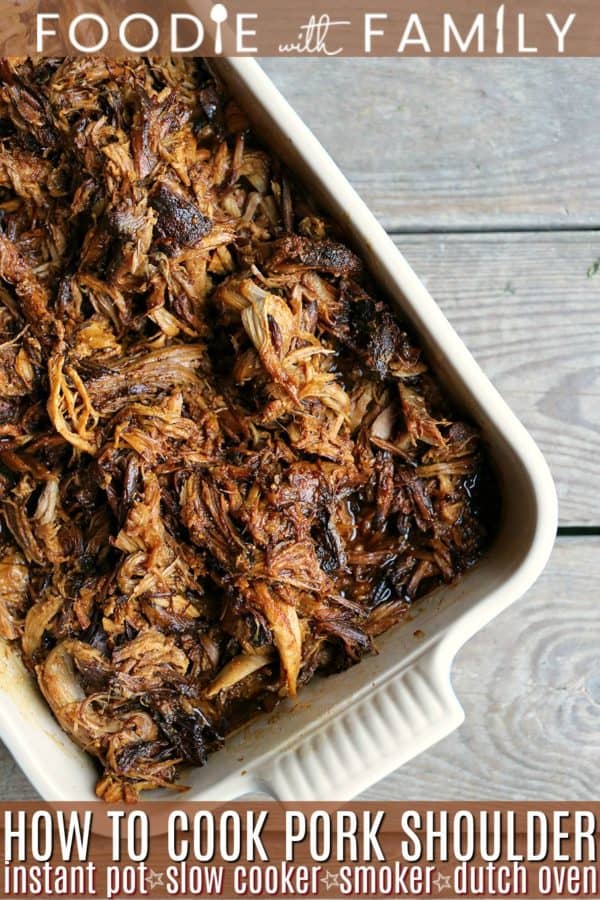



Comments + Reviews